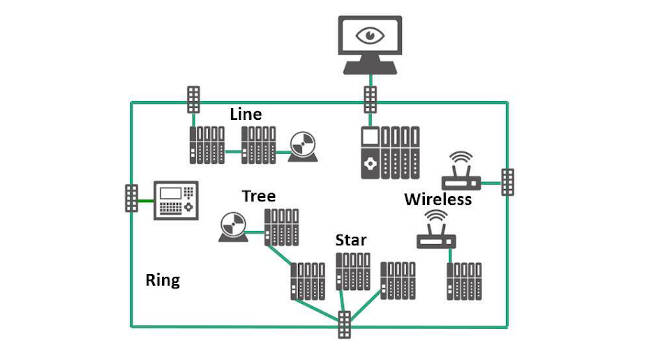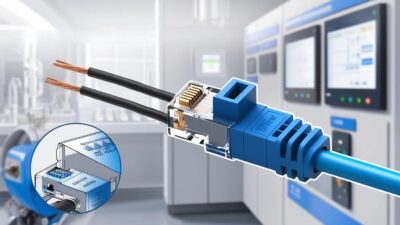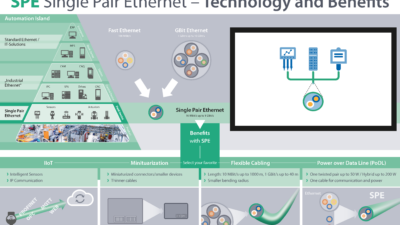Users will employ three major pieces of hardware when building an industrial network with Profinet: controllers, devices, and general infrastructure.See video containing a live demo.

When building an industrial network with Profinet, users will employ three major pieces of hardware: controllers, devices, and general infrastructure. Controllers can be programmable logic controllers (PLCs), distributed control systems (DCSs), or programmable automation controllers (PACs). Devices can be input/output (I/O) blocks, radio frequency identification (RFID) readers, drives, process instruments, proxies or even other controllers. And cables, connectors, switches, and other components make up the network infrastructure.
Users can select Profinet products from a variety of suppliers. It is not a requirement to implement devices and controllers from the same manufacturer. Be strategic when choosing the controller, as the engineering tool you will use to configure the whole network is determined by the controller.
Cables, connectors, and switches do not need to be specialized for Profinet. Users can employ standard Ethernet cables to build the network. However, industrially graded cables are the default for most installations, as using standard Ethernet cables in challenging factory environments can cause many issues. Commercially-available Ethernet cables are not industrially-graded; they break and damage easily and can ultimately compromise the network infrastructure and signal quality.
In Profinet installations, users also can employ simple unmanaged switches as long as they meet the minimum specifications of 100 Mbit/s, full-duplex. Still, it is always recommended to use rugged components that can withstand rough environments. Industrially graded components reduce downtime and maintenance requirements dramatically.
The most common connector type for Profinet is RJ45, but M12 connectors are also used in high exposure environments and BFOCs for fiber optic applications.
Profinet users have flexibility when designing a network. There is a variety of topology options: line, star, tree, and ring. You can implement these topologies by using external switches or devices with two ports, including a built-in switch for daisy-chaining. In terms of media options, Profinet is compatible with copper and fiber optic wired media and wireless via Bluetooth or Wi-Fi.
Network configuration
Configuring a Profinet network is not complicated. Each controller has an associated engineering tool to configure the network. Even though engineering tools vary across manufacturers, there is a standard process for Profinet configuration. This live demo shows how to configure a Profinet network.
This article originally appeared on PI North America’s website. PI North America is a CFE Media content partner.Edited by Chris Vavra, web content manager, Control Engineering, CFE Media, [email protected].


